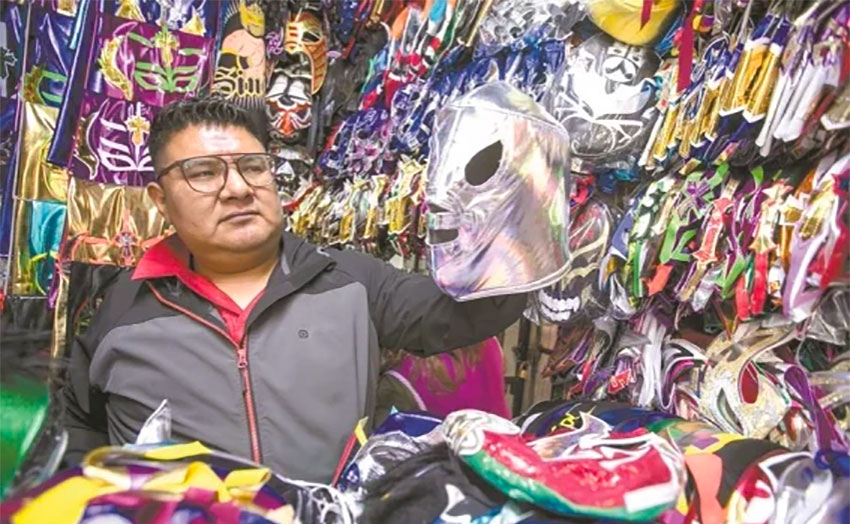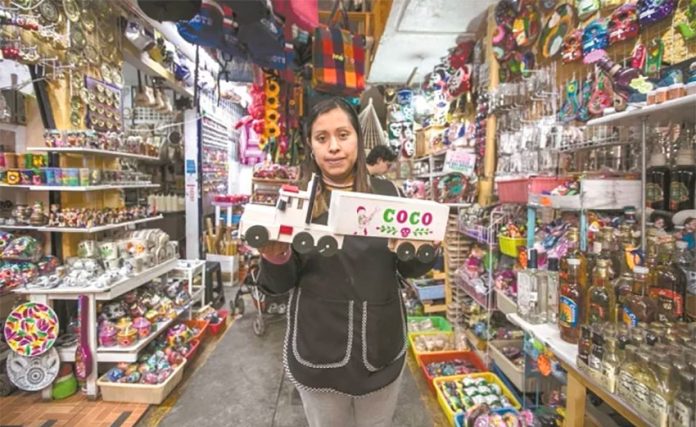Despite decades of brutal competition from plastics and electronics, Mexico’s traditional handcrafted toys still manage to survive.
Vendors admit that technologies such as tablets and smartphones have hurt their sales, but they deny that demand for traditional toys has died. The secrets to their survival seem to be a sense of nostalgia, innovation in how the toys are used and adapting to trends in popular culture.
Many of the toys are sold in places such as La Ciudadela, a large handcrafts market in the historic center of Mexico City that is among several that exist due to government efforts to promote and preserve the role of handcrafts in Mexican society.
Interviews with various vendors here indicate that handcrafted toys remain an important part of the Christmas season in Mexico, especially for families with children.
Traditional toys include dolls and other figures, miniature versions of adult items such as dishes, vehicles and tools, animals, puzzles, games and more. They are made with just about all the same materials as other handcrafts including textiles, paper, clay, wood, metal and even unusual ones such as corn husks.

Rosario, 27, has sold Michoacán-made wooden toys in La Ciudadela for the past five years. She says sales were better in the past, but she enthusiastically states that people are starting to show more interest in the toys again, in part because of innovations that make them more accessible. She says the uptick in sales is because technology has been offering recycled ideas as of late, but there has been innovation in the production of wooden toys to make them more attractive to modern children.
For example, wood tops were spun using a cord wrapped around the toy, which required some skill to master. Today, they can be spun using a mechanism which is much easier.
“Before the toys were more difficult to operate. Now, it is easier to get the ball into the cup with a little practice, and without breaking a tooth,” jokes Rosario. There is also a version of the popular game Jenga which, Rosario assures, “is played with more adrenaline.”
Other innovations include taking cues from pop culture, particularly movies. To make the wooden trucks more attractive, they are painted with images from popular Disney movies such as Cars. Wooden guitars are made imitating those from the movie Coco.
Perhaps the most recognizable Mexican toy is the ball-in-cup, which is frequently sold in tourist markets. It consists of a cup on the end of the stick, and a ball hanging by a thread from where the stick and cup join. The goal of the game is to swing the ball up and over into the cup.
It, along with the wooden top, are the most popular traditional toys sold in in La Ciudadela. They cost between 30 and 50 pesos each.
In popularity, they are joined by yo-yos, María dolls, teetotums (a kind of top with messages or a gambling aspect to them), lotería boards and figures of Mexican cultural icons.
Some of the most expensive toys found at the Ciudadela market are play sets depicting Mexican lucha libre arenas, complete with figures of wrestlers El Santo and Blue Demon, who are still legends years after their deaths.
The popularity of the wrestling merchandise is mixed. The sales of figures have taken a hit due to the popularity of superhero figurines. “They (the wrestlers) were our heroes when we were kids,” says one vendor. But hardly any sell, at least for now.
Masks, however, remain popular, especially as gifts.
It is unclear if any of these vendors have permission from copyright holders to use images from movies or sports.
Often the reason why traditional toys are bought is because parents insist on including them in the Three Kings’ bounty along with toys requested by children in the days before January 6. It is a reminder of the parents’ childhoods, and a way to pass along Mexican identity to the next generation.
“We say that we must not let this tradition be lost. We must buy products made by hand,” said one vendor as he played with a ball-in-cup.
Source: El Universal (sp)
